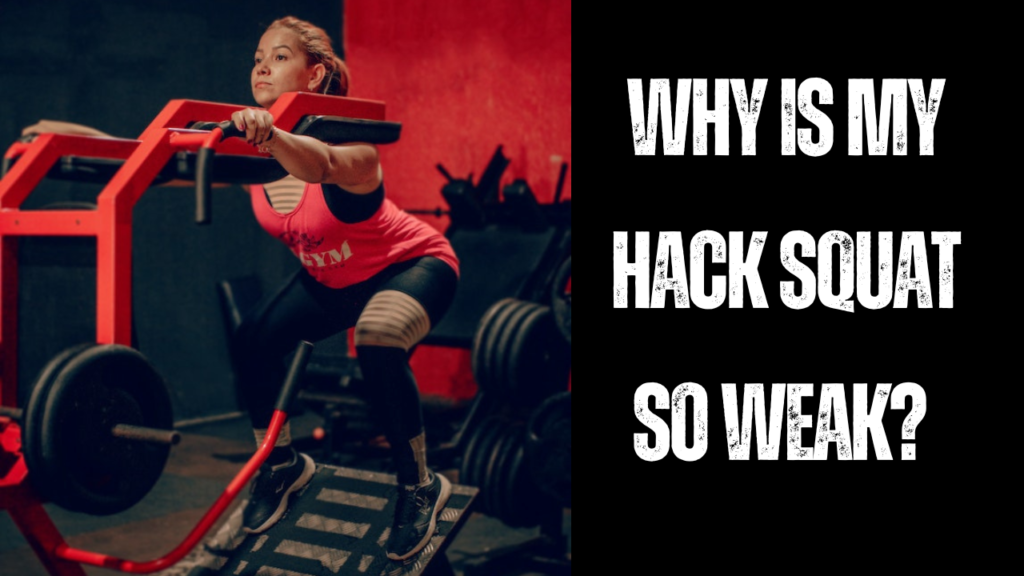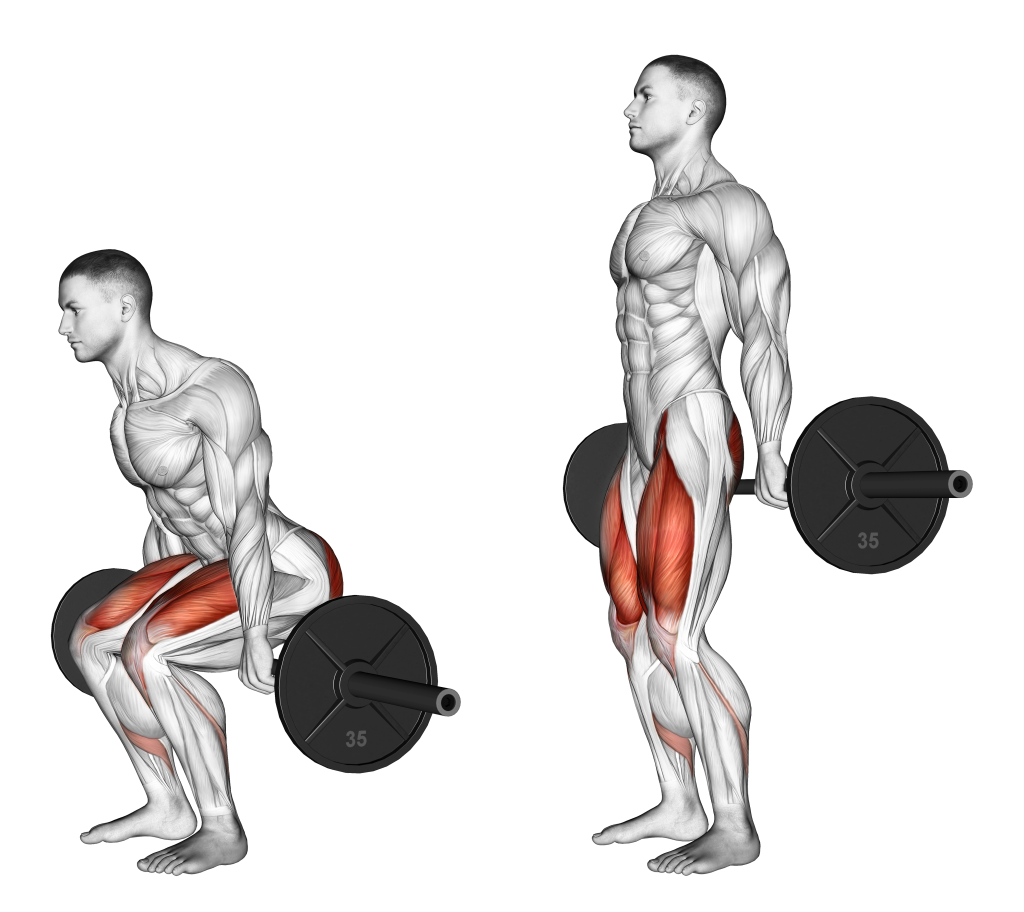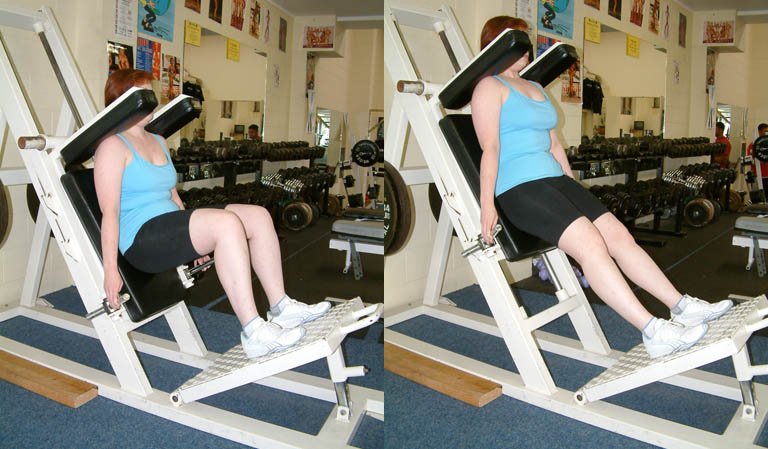
Why Is My Hack Squat So Weak? 11 Factors To Fix Issue
Are you frustrated with your hack squat? Are you not making the progress that you desire, despite all of your hard work and dedication in the gym? Don’t worry as it’s a very common problem for many lifters.
It can leave you wondering “why is my hack squat so weak”, but don’t worry as the problem could be the result of several different factors ranging from muscle imbalances to technique issues.
In this blog post, we’ll break down why your hack squat might be lagging and what steps can be taken to help rectify the issue!
Why Is My Hack Squat So Weak?
One of the biggest reasons why your hack squat might feel weak is due to muscle imbalances in the lower body. For example, if your quads are stronger than your glutes and hamstrings then this can lead to an uneven distribution of strength when performing a hack squat which could be limiting your progress. Another common reason why your hack squat might be lagging is because of the machine itself. The restricted movement, foot placement and angle of a hack squat can go against your body’s natural range of motion (ROM) and it can feel very different to a traditional back or front squat. This means that the body needs time to adjust and get used to the new stimulus, so don’t be disheartened if it feels harder at first. In addition, going too heavy with a hack squat can also lead to weaker results. Just because you can lift more weight with a traditional back or front squat doesn’t mean that you should be able to lift the same amount with a hack squat. Start light and increase the weight slowly to give your body time to adapt and get used to the new exercise.
Many find the hack squat a challenging exercise, but there are a few things you can do to help improve your strength and performance.
1. Machines can restrict ROM
If you are doing hack squats on a machine they can restrict your movement, which can make them quite challenging – so working on hip and ankle mobility is key. Being “locked in” to a machine means that you don’t get to utilize the full range of motion of a squat, which can feel awkward and uncomfortable.
Spend time on some warm-up and accessory exercises such as lateral band walks and ankle mobility drills to help loosen up the hips and ankles before your hack squats. Doing some dynamic stretches before you get into the machine will help to get your muscles and joints ready for the exercise. In addition, using a higher box or platform can help to increase the range of motion, which will make the exercise even more challenging.
Whereas if you are doing hack squats with a barbell, you won’t feel as restricted and can adjust your stance and grip width to suit your individual body. This is a great way to practice the movement without feeling overwhelmed by the machine.
2. Form is key
Form and technique are also essential for a successful hack squat, so take the time to get it right. Ensure you brace your core, keep your chest up with a neutral spine and drive through your heels as you come up from the bottom position of the squat. This will ensure that you are working the correct muscles and not putting unnecessary strain on your knees.
Focus on strengthening the posterior chain (glutes and hamstrings) by including specific exercises such as hip thrusts, Romanian deadlifts and glute bridges into your program. This will help to create a balanced lower body, which means that you won’t be relying solely on your quads to get you through the hack squat.

3. Muscle imbalances
As mentioned above, muscle imbalances can be another factor contributing to weaker hack squats. Your quads, glutes, and hamstrings must be equally strong in order to get the best out of this exercise.
If your quadriceps are overdeveloped compared to your glutes and hamstrings then you will struggle to activate these muscles properly during a hack squat. This can lead to poor form and weaker results, which are both common signs of muscle imbalance.
Incorporate some unilateral exercises such as single-leg Romanian deadlifts and Bulgarian split squats into your program to help strengthen the glutes and hamstrings. This will help to create a more balanced lower body and prevent any imbalances from occurring.
4. Feet placement
The position of your feet can also have an impact on the effectiveness of your hack squat. Most machines require you to place your feet shoulder-width apart, but this may not be the most suitable for everyone as it can restrict movement.
You can try playing around with different foot positions and see which one feels best for you. If you feel more comfortable with your feet slightly wider apart or closer together then go for it! This will help you to get the most out of your hack squat and improve your performance.
When using a barbell for hack squats, you can adjust your stance and foot placement to suit your individual body. Just make sure that you keep your feet flat on the ground throughout the exercise to ensure that your form is correct and that you are getting the most out of each rep.
Related: Why Are My Traps Sore After Deadlifts?
5. Angle of squat
The angle of a hack squat can also affect your performance. Most machines are at a 45-degree angle, however, this may not be ideal for everyone. If you don’t feel comfortable with the angle or have any knee or hip issues then it is best to avoid that machine and look to use a barbell or try a different exercise.
If you are only used to doing regular back or front squats then the machine may feel very different and it is important to take your time and adjust accordingly. Remember, always stay within your body’s natural range of motion to prevent any injuries from occurring.
6. Feels different to a normal squat
The hack squat can feel different to a regular back or front squat due to the way machines and the barbell feel when performing the movement, which can be difficult to adjust to. Taking your time and listening to your body can help you determine the best form for a successful hack squat.
It can be quite restrictive and some people may struggle to get used to it, however, practice makes perfect.
Lifting the barbell from the ground can also require a slightly different form from a regular squat. Make sure that you practice the movement before lifting heavier weights to ensure that your form is correct and you can lift safely.
Try doing a few light sets of bodyweight squats to warm up your hips and ankles before starting any hack squat with a barbell or machine. This will ensure that you are properly warmed up so that you can focus on technique and form during your hack squats.

7. Greater demand on quadriceps
The hack squat is a great exercise for developing strength in your quads. However, this exercise can be quite demanding on them, so if they are weaker than other muscles in the lower body, you may struggle to perform the exercise effectively.
Due to the angle at which you perform the hack squat, it does place more emphasis on your quads compared to other lower body exercises. For this reason, the exercise can feel more tiring than a regular squat.
Incorporating other exercises into your training program to help strengthen weak areas such as the glutes, hamstrings, and calves. This will help create a balanced lower body and ensure that you are able to perform hack squats with good form and technique.
8. Going too heavy
As with any exercise, it is important to only lift a weight that you can handle. Trying to lift too heavy of a weight can lead to bad form and improper technique which could cause injury.
Start out with a lighter weight when first incorporating hack squats into your program and gradually increase the weight over time as you get better at the exercise. This will allow you to develop good technique and form before trying to lift heavier weights.
Many may try and load up the machine or barbell with a similar weight to their regular squat, but this may not be ideal and could end in frustration and injury.
It is also important to remember that, like any exercise, it takes time to improve your hack squat strength and progress. So be patient with yourself and don’t rush into lifting heavier weights before you are ready.
Related: Why is leg day so hard?
9. New exercise?
If you are new to hack squats, then there are a few tips and tricks that may help you during your first few sessions.
Firstly, take some time to get familiar with the machine or barbell before starting your set. This will allow you to adjust any foot placements and angles so that they feel comfortable when performing the exercise.
Secondly, focus on your breathing throughout the exercise. This will help you stay in control of the weight and maintain proper form.
Finally, try to keep your core engaged throughout the movement to ensure that you remain stable and balanced. It may also help to squeeze your glutes at the top of each rep for added stability and control.
10. Increase volume
If you are finding that your hack squat isn’t where it needs to be then increasing the volume and frequency of your training may help.
Try adding one or two additional sets per week as well as increasing the reps in each set. This will improve your strength, technique, and overall performance.
Also, make sure that you are getting adequate rest between sessions to allow your muscles to recover effectively. This will ensure that you can perform at your best each time you hit the gym.
11. Mind games
The final reason why your hack squat might be weak might be down to the fact you dread the exercise. Sometimes it can be easy to talk yourself out of doing certain exercises, and this could be the reason why your hack squat progress has been limited.
We all have those exercises which we deem frustrating (most of them are leg exercises), and most of the time it’s because the exercise is difficult. Try and change your perspective on difficult exercises and focus on the end result rather than just how hard they are.
Try challenging yourself each time you hit the gym by setting a goal for how much weight you want to lift or how many reps you want to complete. This will help keep you motivated and focused on improving each time you step into the gym.
Be honest with yourself – if you really don’t like hack squats, then try to find an alternative exercise which works the same muscles but is more enjoyable for you. This will help ensure that your lower body stays balanced and strong without having to dread the hack squat each week.
Final thoughts…
If your hack squat has been feeling weak lately then it could be down to any number of reasons. From muscle imbalances and restricted range of motion to going too heavy or dreading the exercise, there are a few things you can do to help improve your strength and performance.
Remember that it takes time to build up good form and technique, so don’t be too hard on yourself if you have to start off with lighter weights. Also, try to focus on goal setting and challenging yourself each time you hit the gym as this will help keep you motivated and focused on your progress.
Is your hack squat is weak and have these tips helped? Let me know in the comment section below.


